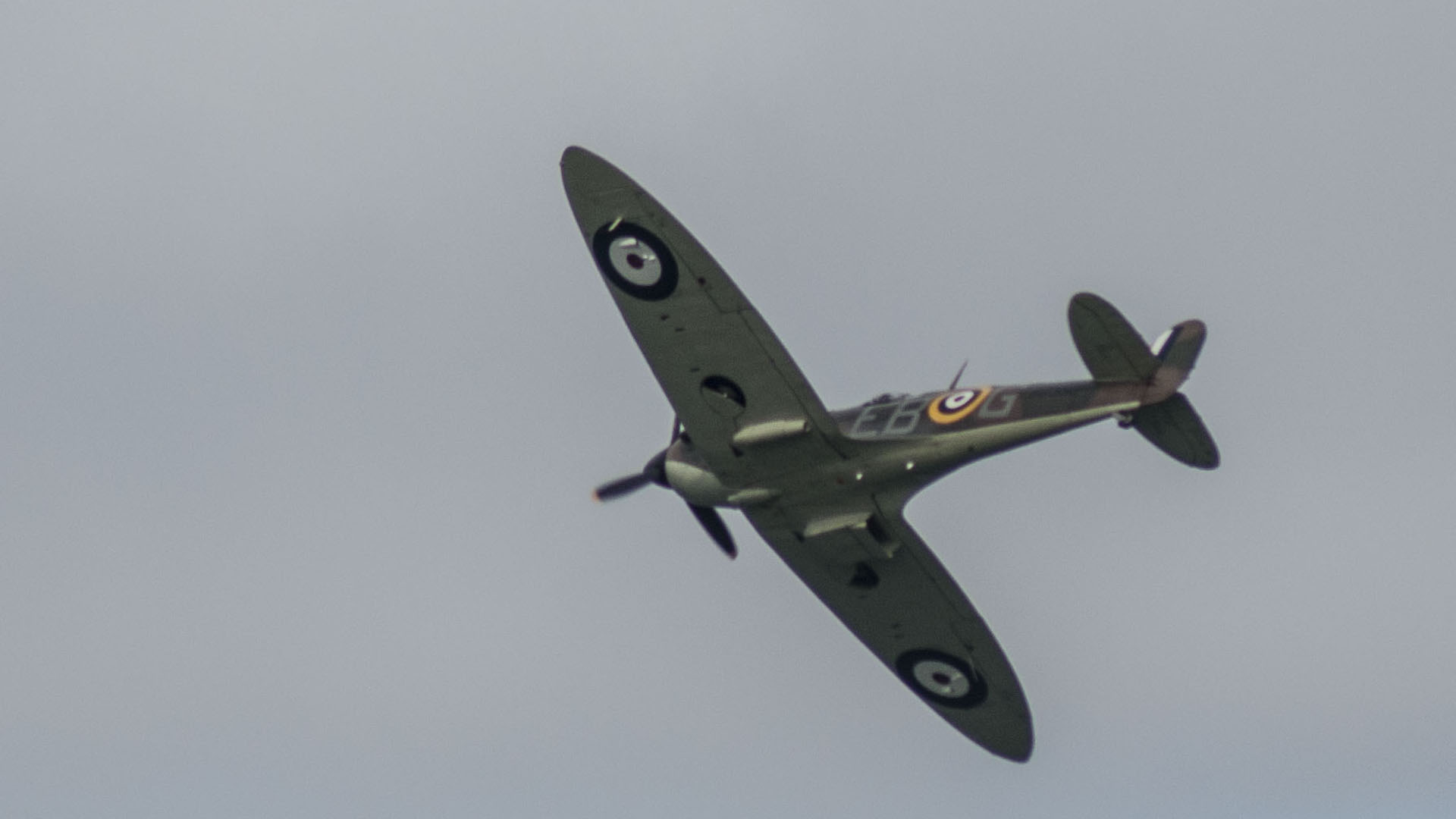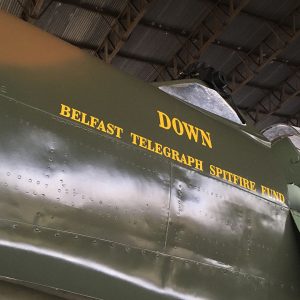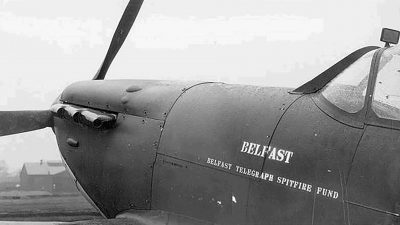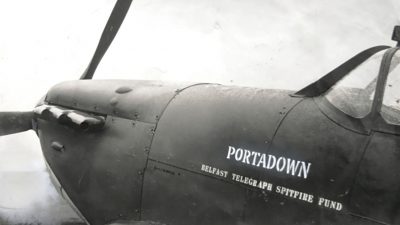The Supermarine Spitfire is one of the best known planes of the Second World War. Along with the Hawker Hurricane, they became legendary during the Battle of Britain campaign. In 1940, an idea was put forward where individuals, towns, and businesses could present aircraft to the Royal Air Force. As the most popular plane, Spitfires were the obvious choice.
Lord Beaverbrook, Minister of Aircraft Production set the cost at £5,000. Although the actual cost was closer to £12,000, a lower figure would seem more obtainable to those donating. People of Northern Ireland raised enough money to buy 17 Mark IIa Supermarine Spitfires. The campaign appealed to business owners and working-class people alike. The press used slogans such as “A Spitfire a day keeps the Nazis away”, and “Speed That Spitfire”.
Thousands of pounds came flooding into the Belfast Telegraph offices of Royal Avenue, Belfast, Co. Antrim. In total, the campaign raised £88,633 16s 5d. That is almost £3,000,000 today. The initial press talked of the 100,000 Shillings Fund. The aim was to raise £5,000 to cover the cost of a single Spitfire. That total was almost raised by workers at Harland and Wolff alone. The workforce at the Belfast shipyard donated £4,559. Across the country, a pair of schoolgirls in Co. Fermanagh donated 336 half-pennies. The Belfast Telegraph published the name of each donor.
Ulster's Presentation Spitfires
Among the Presentation Spitfires flown by the Royal Air Force, the Belfast Telegraph Spitfire Fund provided some of the earliest. The first was The Londonderry Spitfire and was soon followed by City of Derry, Belfast, and Harlandic. The names of the towns, cities, counties, and businesses adorned the engine covers in 4″ high yellow lettering. The Mark IIa Spitfires fitted with a 1,175 horsepower Rolls-Royce Merlin XII engine had a top speed of 370mph. Built at Castle Bromwich, Birmingham, these fighter planes could reach heights of 32,800 feet.
Most of the Belfast Telegraph Spitfire Fund planes did not survive the war. The enemy shot down the Tyrone Spitfire and the Harlandic Spitfire in a battle over the French coast. 1941 also saw the City of Derry Spitfire and the Londonderry Spitfire struck off. A total of 12 pilots lost their lives in the Northern Ireland Presentation Spitfires. Only the Enniskillen Spitfire and the Fermanagh Spitfire still flew at the end of the Second World War.






